This article appeared in the Fall 2021 issue of This Old House Magazine.
As sultry August gives way to the cooler months of September and October, fall’s lower temperatures and shorter days signal it’s time to get busy in the yard and garden. “Fall’s cool weather makes it a great time to work outside,” says TOH landscape contractor Jenn Nawada. “Giving plants some attention then sets you up for a healthier landscape come spring.”
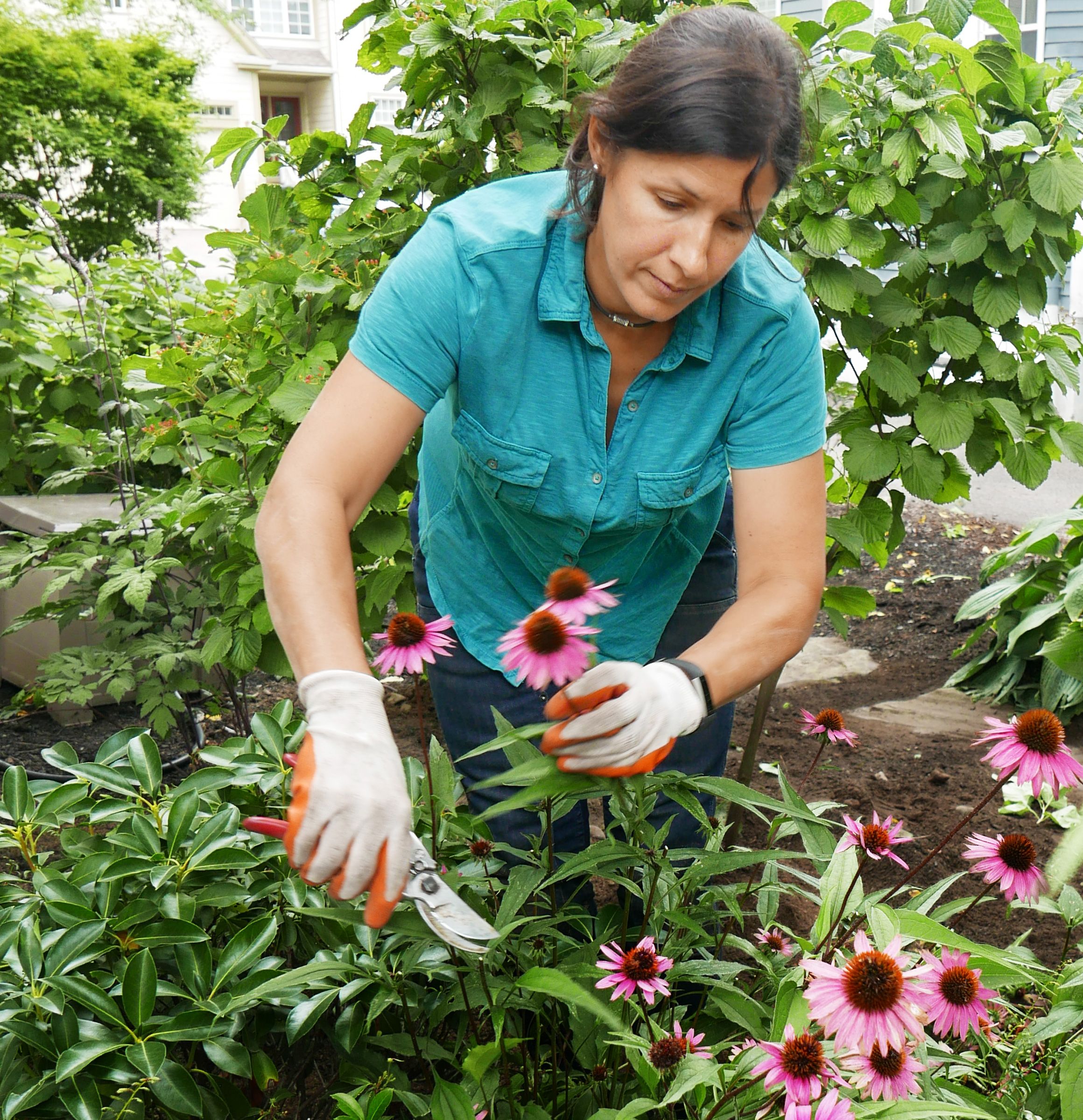
Start by Prepping Your Lawn
Early on, before the leaves start raining down, focus on the lawn. Core-aerate to reduce soil compaction, add compost to improve soil fertility, and overseed to encourage denser turf.
Tackling these tasks first allows seedlings to sprout and develop strong roots—then you can move on to the cleanup work ahead.
Tidy Up Beds and Borders
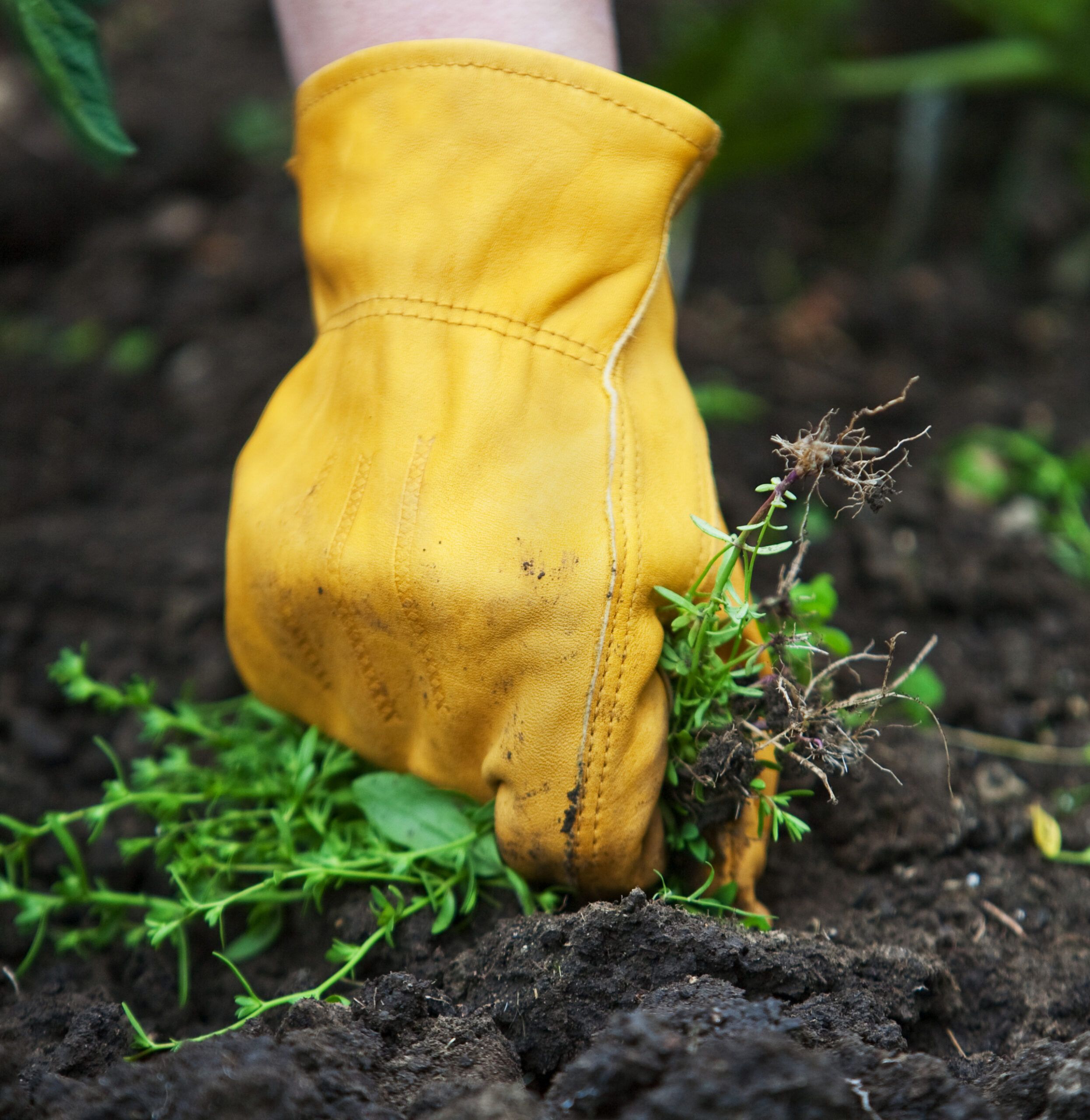
Once autumn leaves have finally fallen, job number one is clearing them out of planting beds.
Start by raking them out onto the lawn (where you’ll pick them up later). A narrow shrub rake with stiff metal tines is best for this task, as it can reach under and between plants without getting tangled in them. “Raking beds also fluffs up the soil so water and air can get in,” Jenn says. It exposes weeds, too, which she pulls by hand so they don’t winter over.
As she rakes away the leaves, Jenn generally lets any existing wood mulch stay in place, unless it’s a mat more than 3 inches thick. She’ll break that up and thin it out with a rigid steel rake: “Compacted mulch limits how much water and air can reach the soil—you don’t want to leave it.”
To encourage strong growth next spring, she trims back perennials, such as iris and daylily, to about 4 inches high, but leaves the upright stalks of ornamental grasses and some tall perennials, like coneflower, for winter interest.
TIP: Composting your garden waste? Keep peony leaves and stems out of the pile; they attract Botrytis blight, a fungal disease. Toss them in the trash instead.
Divide and Transplant Overcrowded Perennials
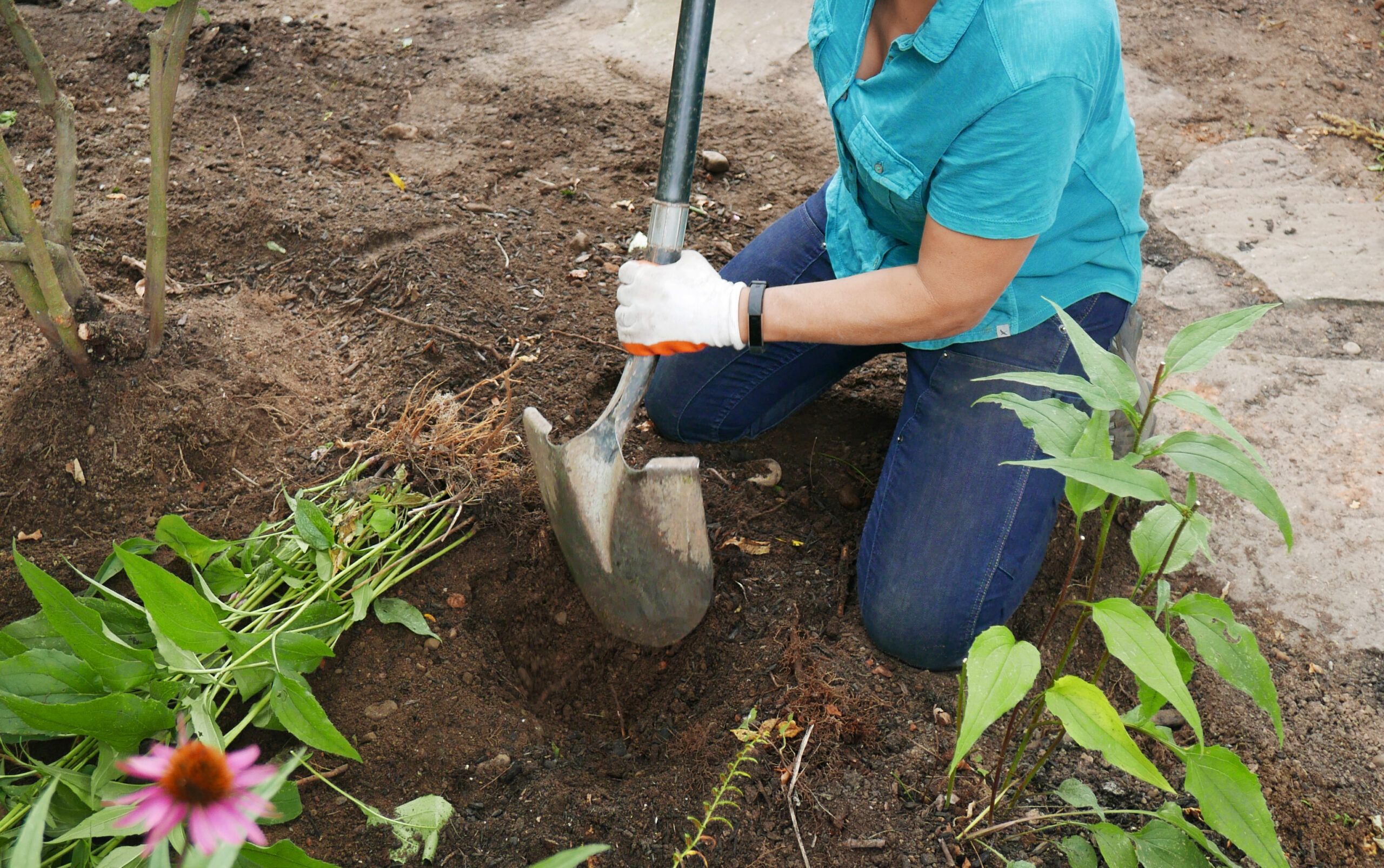
With the garden trimmed back and weeded, it’s a good time to divide and relocate any crowded perennials. If transplanting, gently dig around the plant you intend to move, and lift it out of its hole with a shovel.
“Try to keep as much of the root ball intact as you can,” Jenn says. To divide a plant, dig it up, lay it on the ground, and chop through the roots with a sharp shovel or garden spade. It may seem like rough treatment, but Jenn says divided plants will come back stronger in new spots with more room to grow.
Whether you’re moving a plant or dividing it, dig a hole in the new location that’s about twice as wide as the root ball, blend a shovelful of compost with the existing soil in the bottom of the hole, then spritz the plant’s roots thoroughly with water.
Place the plant in the hole and backfill until the roots are covered. “Don’t add fertilizer at this time of year,” Jenn says. “You want to put the plants to bed, not wake them up.” Water your transplants daily until the first deep freeze.
Get the Right Rake for the Right Job
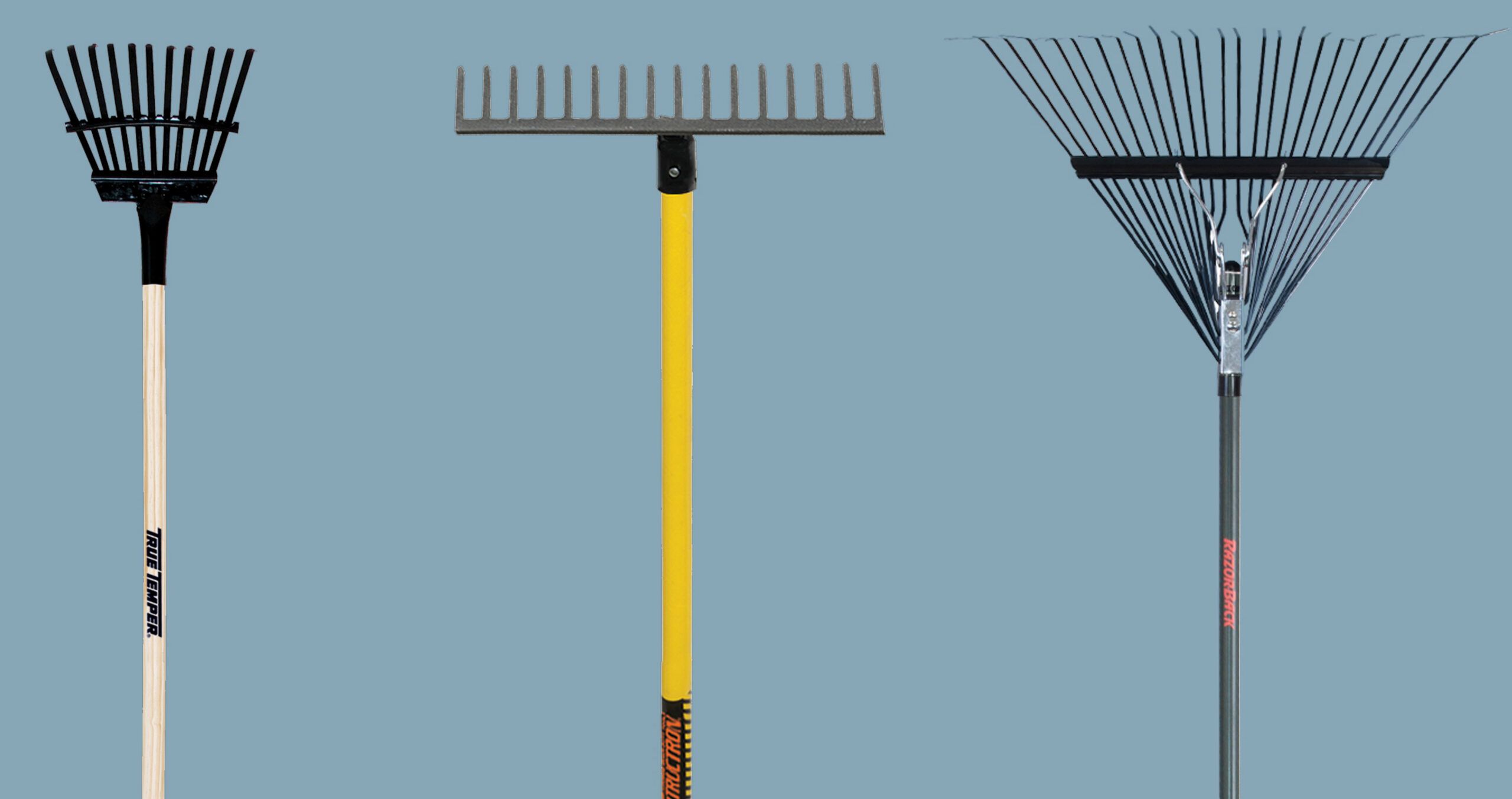
Tools designed for the task at hand make quick work of tidying up the lawn and garden.
Shrub rake (left) : Its 8-inch head maneuvers around plants without damaging them. This model’s 48-inch handle reaches deep into beds. Shown: True Temper Steel-Tine Shrub Rake, $13; Home Depot
Flathead rake (center): Stiff, tempered-steel tines push and pull mulch; flip the head to do a final smoothing. Shown: 16-Tine Structron S600 Level Head Rake, $66; Seymour Midwest
Steel fan rake (right): Flexible tines with bent tips remove matted leaves, which is essential for clearing lawns in fall. Shown: 24-Tine Steel Rake, $20; Razor-Back
Add a Layer of Mulch
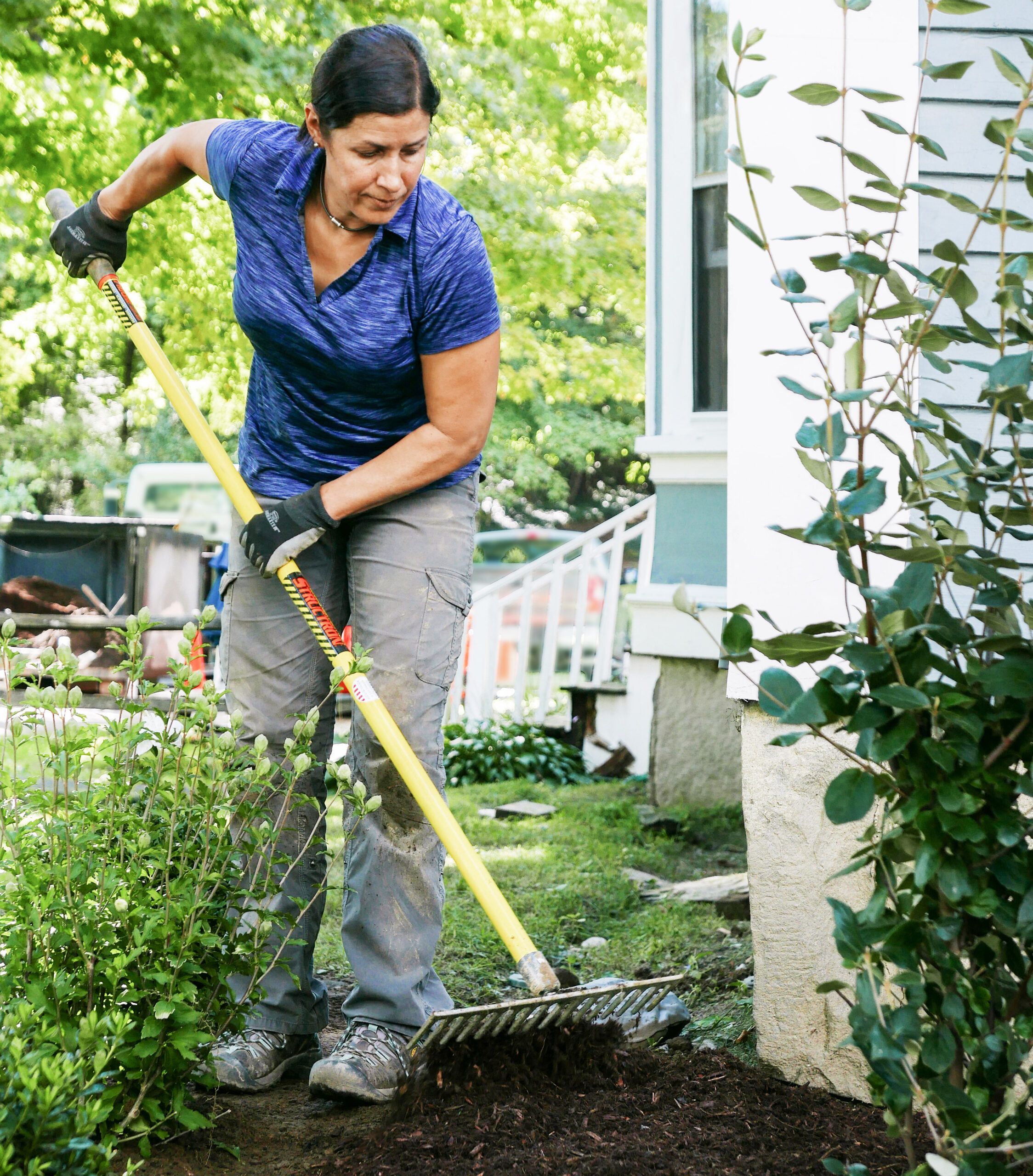
A thin blanket of mulch helps insulate the soil around garden plants against damaging temperature swings in winter. Jenn prefers fluffy mulches made of natural shredded pine or hemlock bark because they resist compacting; other types of shredded bark, including cedar and cypress, also perform well. She draws the line at artificially colored wood mulches, however. “Their dyes can leach into the soil,” Jenn says. “I stay away from them.”
When spreading mulch around landscape plants, Jenn uses a rake with stiff steel tines. Her goal: Get the material into a layer 1 to 2 inches thick around perennials and 2 to 3 inches thick around shrubs and trees, and be sure to keep it from touching the bark, because it can trap moisture and cause rot.
Clear the Lawn of Leaves

Once autumn leaves start to fall, it’s important to remove them from the lawn. Left in place, they can smother and kill the turf; collecting and composting them in a simple pile lets you use them to improve your soil the following year.
The easiest way to gather up leaves is with a mulching lawn mower. Attach a grass-catching bag, set the blade 2 to 4 inches high, and mow as usual. Each time the bag fills, empty it into the pile. If kept moist and mixed regularly, the chopped leaves will break down into organically rich leaf mold—the term for decomposed leaf matter—in as little as six months. The drier the leaves you run over, the more finely they will be chopped, and the faster they will decompose.
After picking up most of the leaves with the mower, go back with a steel fan rake, plucking up any matted leaves the mower can’t reach. Run the mower over them as well and add them to the pile. If a thin covering of chopped leaf matter is left behind, don’t worry; it will break down over time.
A couple of weeks before the first hard frost is due, give the lawn a final dose of a pelletized, slow-release 24-0-10 fertilizer. This formula delivers nitrogen (the first number) to give grass a shot of the plant sugars that protect roots from freezing and provide an energy store for spring growth; skips added phosphorus (the middle number), which established lawns don’t need; and provides a dose of potassium (the last number) for resistance to disease, cold, and drought.
Keep mowing turf to 2½ to 3 inches high until it stops growing and begins its winter nap. Then give the mower a rest, and take one yourself, knowing you’ve given your landscape the care it deserves.
Composting Made Easy
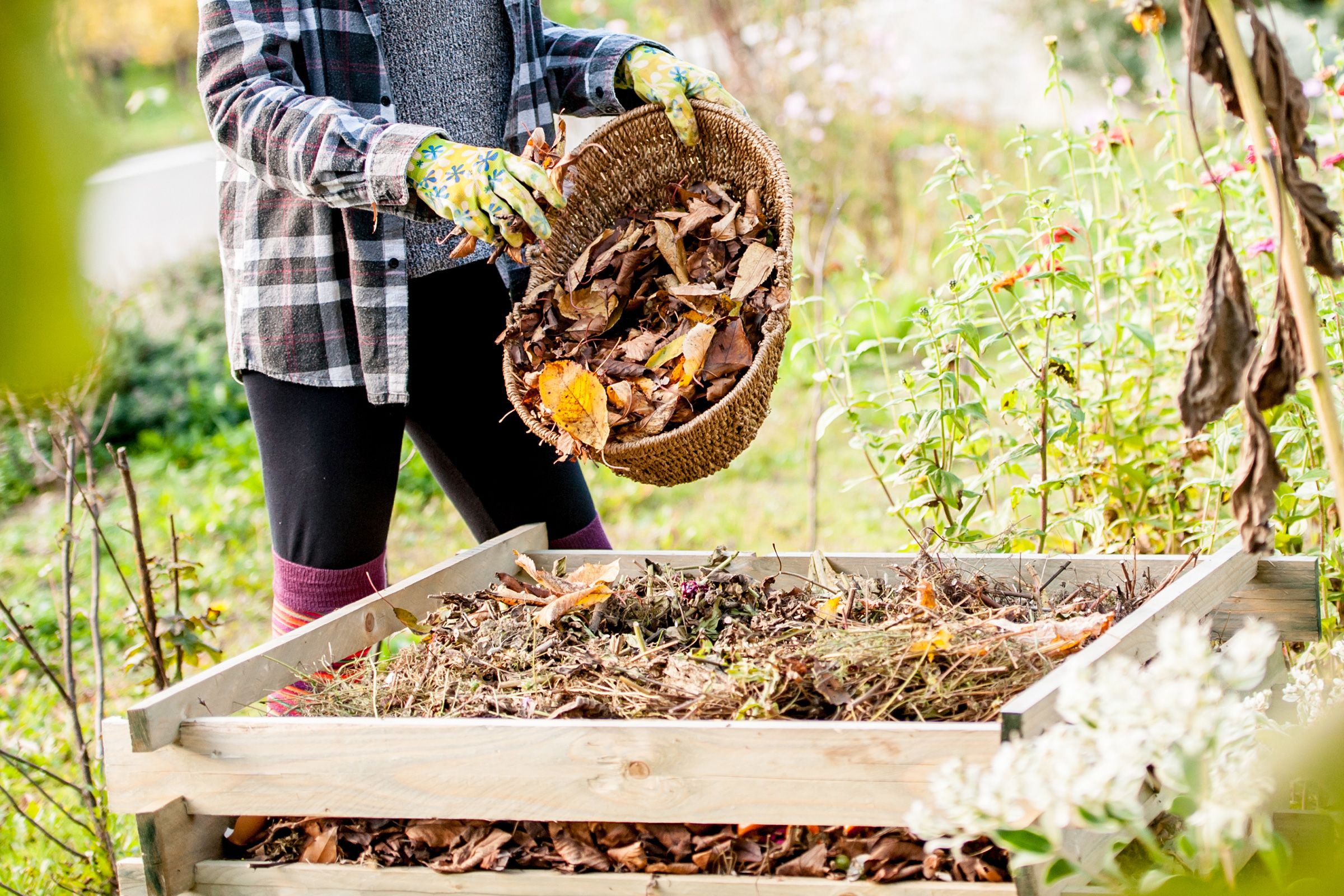
You can turn the chopped-up leaves from your lawn into nutritious leaf mold for your garden by making a simple compost bin like this one. Just take a length of 4-foot-wide, galvanized chicken wire and form it into a cylinder.
Stand it on end and staple upright stakes inside it to hold its shape. Turn its contents over regularly, and keep it moist but not wet. If you start composting in the fall, the leaves will decompose into rich, black leaf mold by next summer.
TIP: Leaves are tough on a mower’s blade. Be sure to sharpen it before you begin mowing the grass next spring.
